NHL: Today's talent goes deeper than generational superstars
It’s the stick, yes, but there is much more to new golden era of NHL scoring. But we’ll start with the one-piece composite stick.
It’s made of different combinations of carbon fiber, graphite, foam, epoxy resin, titanium and Kevlar. It comes close to having the feel of a wooden stick, but without the weight. It is also a lighter and more effective weapon than the two-piece sticks of the previous generation. It is a technological marvel that is highly customizable − for flex, lie, curve and so on. It can cost upwards of $400. For one stick.
“One-piece sticks began coming out around 1992, and what we have now is a generation of players who’ve grown up with them,” said ESPN play-by-play man John Buccigross, a student of the game and its history. “It used to be that only a few guys could really rip it, like (former St. Louis Blues) defenseman) Al MacInnis. Now, everyone can rip it. There are fewer slapshots and more snap and wrist shots. The way these guys can torque up these sticks and pick their spots, goalies are almost helpless now in some situations.”
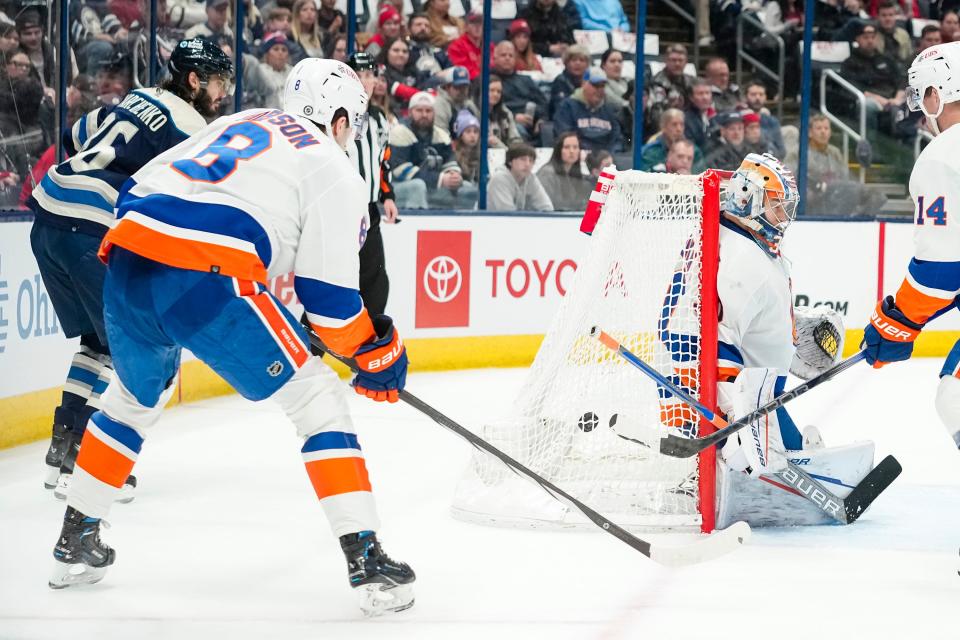
Last season, Erik Karlsson, then a San Jose Shark and now a Pittsburgh Penguin, became the first defenseman to surpass 100 points since Brian Leetch of the New York Rangers in 1991-92.
This season, Toronto’s Auston Matthews finished with 69 goals and, by a hair, missed out on becoming the first 70-goal scorer since Anaheim's Teemu Selanne and Buffalo's Alexander Mogilny scored 76 apiece in 1992-93.
Coaching played a big part
The first generation to grow up with one-piece sticks didn’t necessarily get the most technologically advanced piece of equipment in their hands. At least not right away.
When Blue Jackets All-Star defenseman Zach Werenski was asked whether he learned from a young age to exploit the flex, torque and whip of the one-piece stick – because that is all he has ever used – he gave pause.
“Growing up, it was one stick, and if it broke, I never had the top-of-the-line model. They were too expensive,” Werenski said. “When I got to the U.S. (National Team Development) program, you had more opportunities because they were paying for the sticks. And then at Michigan, you could change some stuff there. And then when you turn pro, you can do whatever you want. The older I’ve gotten, the more you change things, and try new flexes and curves and grips, and stuff like that.”
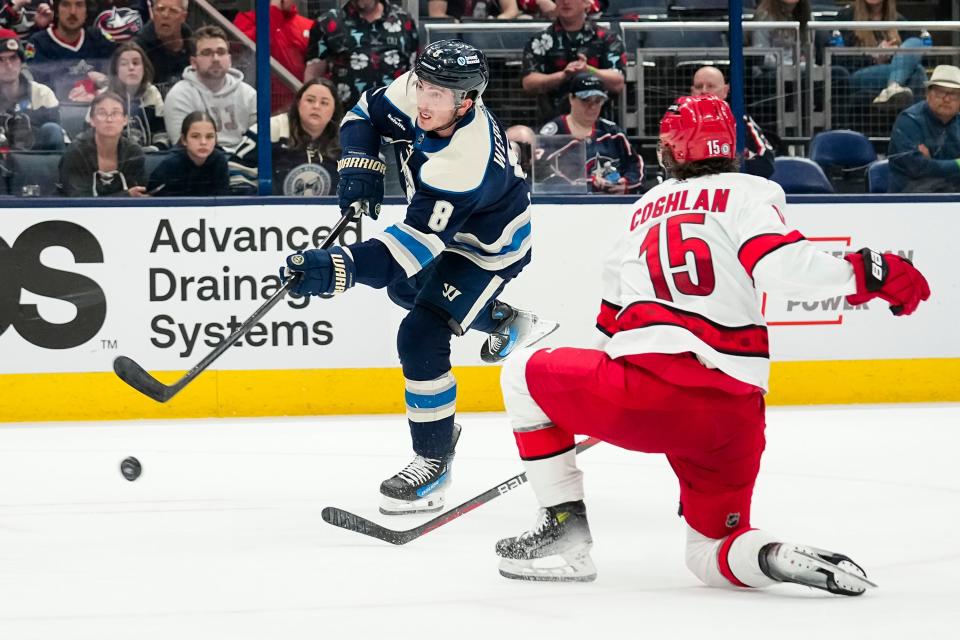
Along this career arc, the approach to developing high-end players also evolved. USA Hockey, for instance, adopted a European model – more practices and fewer games, with dedicated skills coaches for every aspect of the game. Over the past 10 years, Werenski, 26, estimates that he has had eight to 10 skills coaches who specialize in specific areas of the game (skating, stickhandling, shooting, and so forth).
“One main guy, I skate with all summer,” Werenski said. “It’s Jim Hughes – Luke and Quinn and Jack’s dad.”
Each of the Hughes brothers was a first-round pick. Quinn Hughes of the Vancouver Canucks this season led defensemen in scoring with 92 points, which is one of the three highest totals by a defenseman since Winnipeg’s Phil Housley posted 97 in 1992-93.
“Jim Hughes is the guy that runs our skates,” Werenski said. “Then there are times I go out with Brandon Naurato, the Michigan coach. I hired Jonathan Sigalet as a personal skills guy. He watches all the games, sends me clips throughout the season – things I need to work on, things that can help my game, how to catch pucks the right way, how to keep my feet the right way, how to get the puck up the boards the right way.
"The skates with him are super slow. You’re not sweating at all. It’s all technical stuff. All the guys in the league are doing it. How do you stop the spin on the puck when you catch a pass? Stuff like that.”
Coming off shoulder surgery, Werenski this season tied a franchise record for points by a defenseman (57) and set a new mark for assists by a defenseman (46). He already owns the franchise record for goals by a defenseman in a season (20 in 63 games in 2019-20).
“The players are getting very technical when it comes to improving their game,” said former Blue Jackets forward Jody Shelley, the team’s color analyst. “It’s technical study of angles at every level of the ice, millimeter by millimeter. These guys are studying how to skate, how to move. They’re breaking down how Auston Matthews and Connor McDavid shoot the puck. It’s coaching. This surge in scoring – it’s not by accident.”
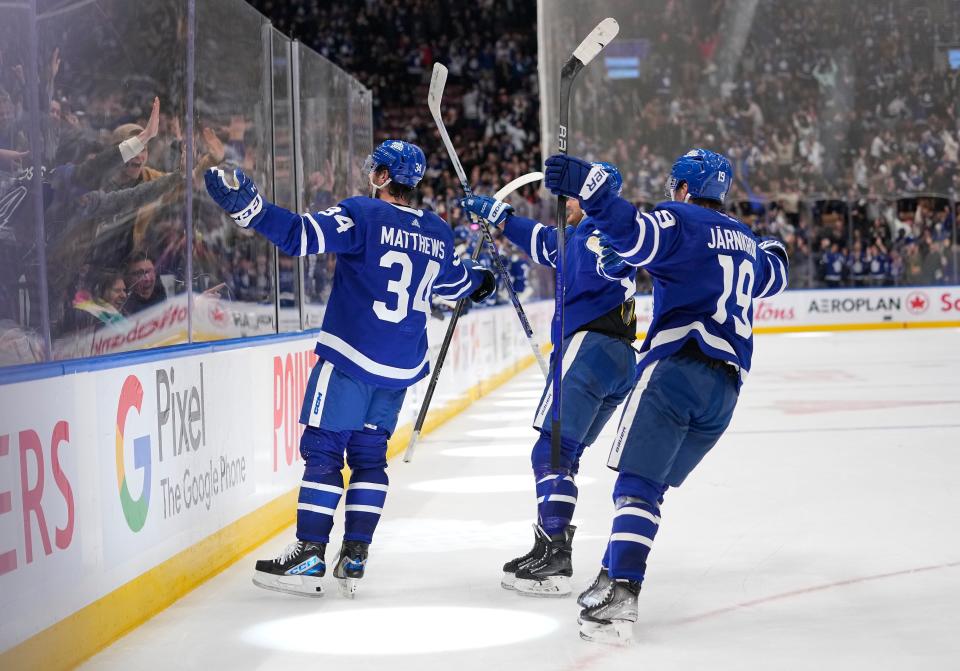
'It has become a game of mistakes'
The NHL came out of a dead-puck era after the 2004-05 lockout with a crackdown on obstruction and some rulebook changes, such as the elimination of the two-line pass rule. Scoring instantly shot up, then coaches adjusted and the trend was checked. Now, NHL games are again averaging more than six goals a game (or more than three per team).
“We’ve got a 50-win team down here in Dallas and I can count on one hand the times (coach) Pete DeBoer stopped a drill in practice,” said Daryl Reaugh, a former NHL goaltender who ably serves as the Dallas Stars’ color analyst. “Coaches used to preach perfection. Mistakes were not acceptable. Now, nobody hits anymore and young guys aren’t as intimidated.
"They’re allowed to make mistakes to a certain degree. It used to be shooters aimed for pads, hoping for a rebound; they were always worried about what’s going to happen defensively if the puck went the other way. Now, they make plays.”
Reaugh played with Wayne Gretzky’s high-flying Oilers in the scoring-mad 1980s.
“With those Oilers teams, the belief was, when you take the offensive zone – move the puck,” Reaugh said. “If you make one pass, the defense has to adjust, the goaltender has to adjust and bad things can happen. Now, it’s just a series of that. The major thing that has happened is it has become a game of mistakes, and through that, a game of offense. They haven’t completely forgotten defense, but when you get the puck, well, get up there and rock n roll.”
There were 39 100-point scorers from 1999-2000 through 2021, an average of fewer than two a season. Granted, this stretch included a season and a half lost to lockouts and two seasons that were shortened for pandemic reasons. But it also included four full seasons without a 100-point scorer.
Over the past two seasons, there have been 20 100-point scorers.
“No one scores from the outside anymore, unless it’s on a tip,” Reaugh said. “So many players can make plays on the interior. They have quick enough hands, quick enough brains to score. Goals went up coming out of the lockout, but that was largely power-play driven. Now, a lot is done five-on-five. I love it. I’ve always said, if you’re going to get rid of the pugilism and the hitting, well, you’d better have high-scoring games and you better have lead changes. Teams are coming back from two and three goals down. I think that’s the most awesome thing about right now.”
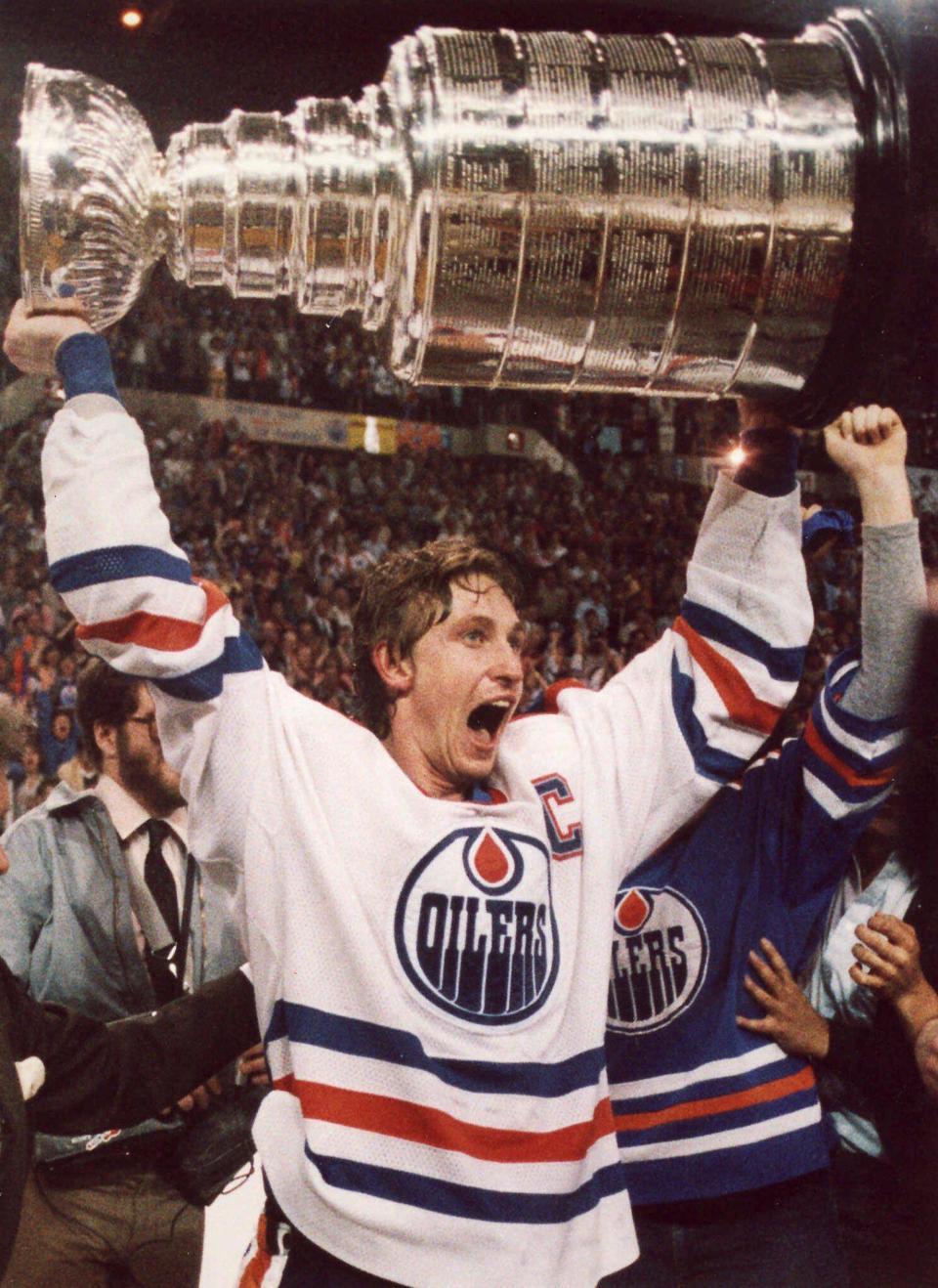
The numbers are popping
Hall of Famer Guy Lafleur won the Art Ross Trophy twice, with 136 points in 1976-77 and 132 in 1977-78. He smoked cigarettes between periods and his offseason regimen was water skiing (good for the core) and more lung darts. He also played at a time when every team used up a roster spot or two to stash a goon and/or a serial felon.
There always been, and always will be, generational talents. On Lafleur’s heels, Gretzky became the GOAT. Gretzky studied Gordie Howe. Sidney Crosby studied Gretzky – and this season, Sidney Crosby tied an insane Gretzky record by averaging a point a game for the 19th season in a row. Is Crosby the best player in Penguins history? Or, is it Mario Lemieux?
These days, goalies are better than ever – bigger, more athletic and more highly skilled – and they coached on every detail of their position. Yet, they are getting beaten not only by generational players such as Connor McDavid, Nathan MacKinnon and Matthews. Modern scoring depth is such that bottom-six forwards are also real and present dangers. There is no more room for goons. Four lines roll, and they all attack.
Reaugh recalled a game near the end of the regular season in which the Stars were beaten by a bottom-six forward on a short-side roof job.
“That’s a horrible goal if you gave it up back in the day, but the position was played differently then – you didn’t just play on your knees, and those kind of shots weren’t expected,” he said. “Now, enough guys are capable of scoring what may have been considered a rare goal not too long ago. A new generation has come along and they’re saying, ‘I have the ability with these sticks to elevate the puck and snap it high right in front of your face.’ ”
In the Phil Esposito/Bobby Orr 1970s and the Gretzky/Paul Coffey 1980s, it was not unusual to see a forward with 50-plus goals and a defenseman with 20-plus goals on the same team in the same season. The game evolved and such a coupling became a rarity. In this century, there have been two such – Vinny Lecavalier/Dan Boyle with the 2006-07 Tampa Bay Lightning and Alexander Ovechkin/Mike Green with the 2008-08 Washington Capitals.
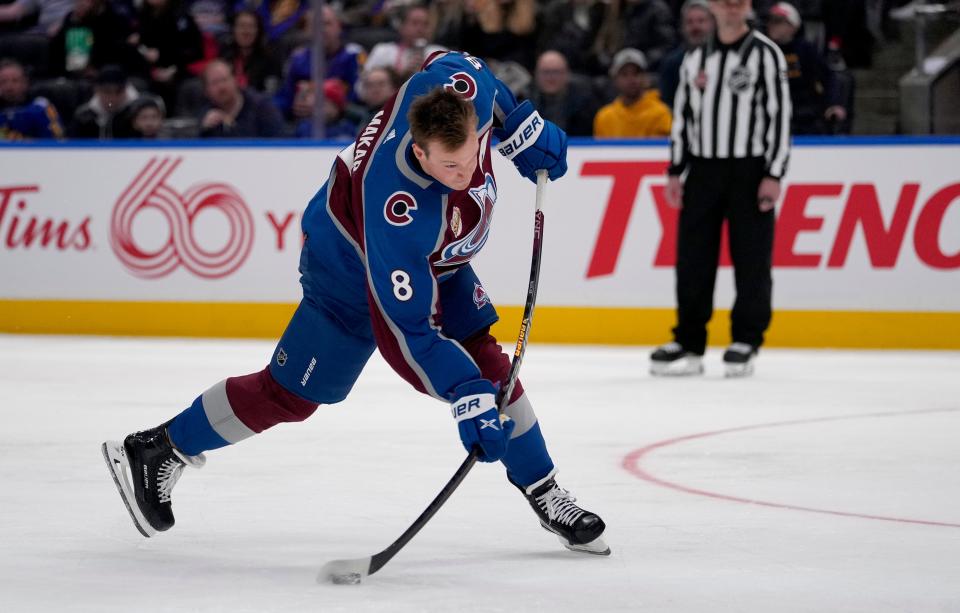
This season, MacKinnon (51 goals) and Cale Makar (21) of the Colorado Avalanche joined the 50-20 club. And Nashville’s Filip Forsberg (48) and Roman Josi (22) were among those who came close.
“They’ve broken down the game to another level,” Shelley said.
The last two Art Ross Trophy winners – Nikita Kucherov (144 points this season) and McDavid (154 last season) – logged the highest single-seasons totals since Lemieux’s 161 points in 1995-96.
Buccigross marvels whenever he pulls up a microphone in the booth or an ottoman in his den.
“The short-side shelf shot – we didn’t see that when we were kids,” Buccigross said. “The Michigan. All this stuff. There are fewer ‘hope’ plays where you’re firing at a goalie and hoping for a rebound, and more actual direct ‘I’m trying to score here.’
"These players have grown up watching creative and cerebral players like Sidney Crosby. Now, they’re trying to mimic all those moves. It’s in their brains.”
Get more on the Blue Jackets and the NHL on Cannon Fodder
This article originally appeared on The Columbus Dispatch: The talent in today's NHL goes deeper than generational superstars

